The Level 2 Workbook teaches kids about the real world of horses through the lens of math and science. Math and science are tools we can use to satisfy our natural curiosity about the world around us. Math in this workbook is primarily at the grade 5 level with some grade 4 (geometric measurement for example) and grade 6 (finding the mean or average of a set of numbers). For kids who love horses, the motivation to learn is built in!
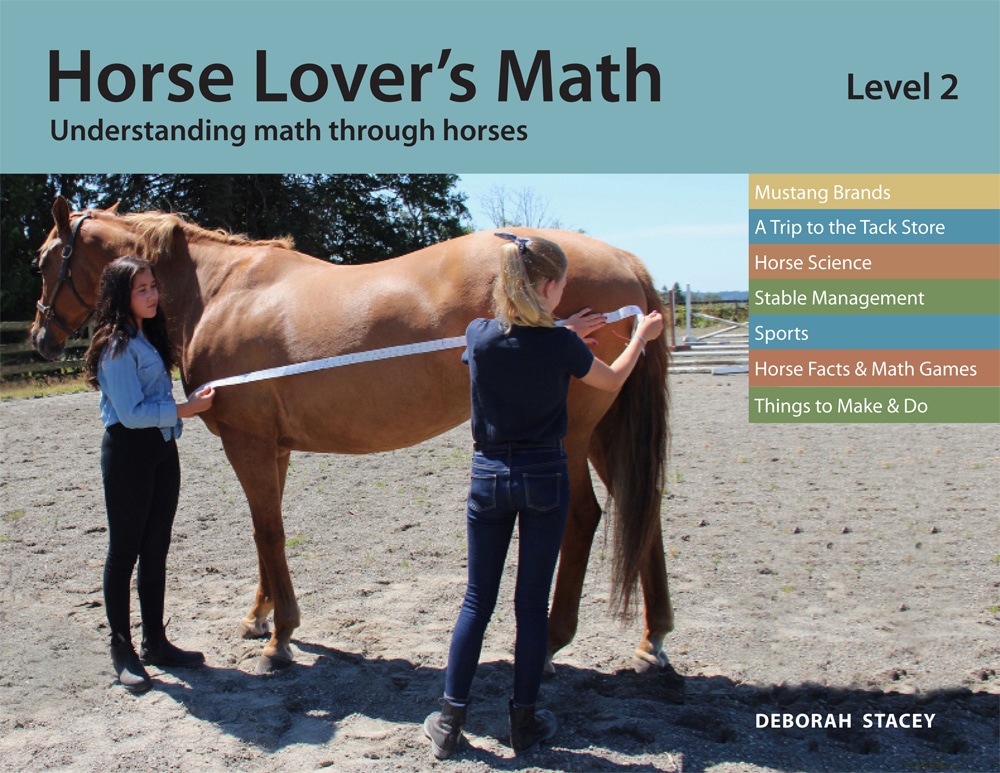
Level 2 Workbook
Mustang Brands
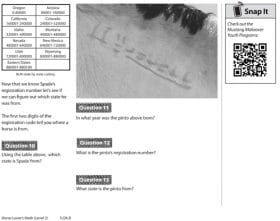
Managing and caring for wild horses sometimes require a method for keeping track of individual animals. In this section readers learn how the Bureau of Land Management in the United States uses the International Alpha Angle System when they brand captured mustangs. They’ll also learn the alphanumeric code that the National Park Service uses to track the wild ponies of Assateague Island.
A Trip to the Tack Store
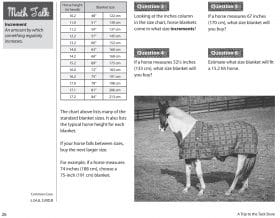
How do you know what size blanket a horse needs? How much does a horse blanket cost? How do you measure a horse for a girth or new stirrups for yourself? Along with measurement, shopping at a tack store requires an understanding of money and making change. All of this is fun and interesting when you’re shopping at a tack store!
Horse Science
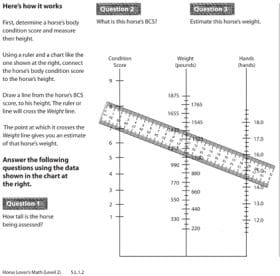
Readers learn how to assess a horse’s body condition score and how to assess a horse’s overall balance and conformation using the horse’s head length to measure and compare. They’ll learn also learn about coat-colour genetics, equine vision, and how to estimate a horse’s weight using their height and body condition score.
Stable Management
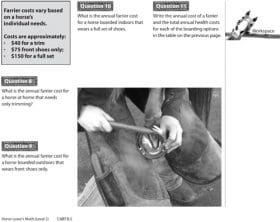
What are the necessities and expenses involved in owning a horse? In this section kids are led through the process of estimating feed, stabling, health care, and equipment costs to give them a realistic idea of how much it costs to own a horse. How much water do horses need to drink each day? What’s involved in meeting the hay needs for a barnful of horses? Math is important when caring for horses.
Sports
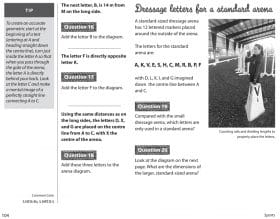
Thoroughbred racetracks are divided into 16 equal sections and marked with differently coloured poles depending on what fraction of a mile they represent? How do jockeys, exercise riders, and trainers use these poles?
Dressage arenas are typically two sizes and laid out using metric measurements. Letters are placed at carefully measured points right outside the perimeter of the arena. Where are these letters placed, and how are they used?
Horse Facts and Math Games
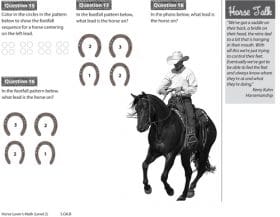
Did you know you can determine what day of the week a horse is born using their birthdate and a little math?
In this section, math’s four operations will help kids break codes to reveal a word that means “fear of horses” and interesting details about a horse’s body and how it works. They’ll also have fun figuring out “Horse Picture Math Puzzles” and learning about horse-gait footfall patterns.
Things to Make and Do
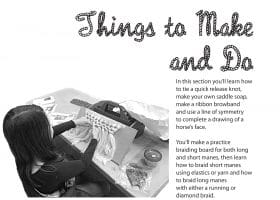
In this section kids learn how to tie a quick-release knot, make their own saddle soap, make a ribbon browband, and use a line of symmetry to complete a drawing of a horse’s face. Instructions for how to make a practice-braiding board for both long and short manes are detailed, followed by how to braid short manes using elastics or yarn and long manes with either a running or diamond braid.
Intrinsic motivation is the inner-directed desire to seek out new things, new challenges, and to gain knowledge—and—it’s something we’re all born with. According to Harvard-based child psychologist Paul Harris, a child asks around 40,000 questions between the ages of two and five. We are born wanting to learn about the world around us.
Studies show that interest helps us think more clearly, understand more deeply, and remember more accurately. Mathematician and Wellesley College professor Oscar Fernandez says, “Most of us actually learn math best through direct real-world connections.”
Why not let a child’s interest and passion for horses motivate their learning?

